Equestrian Art
Restoring the Art in the Equestrian Art
Jean Luc Cornille
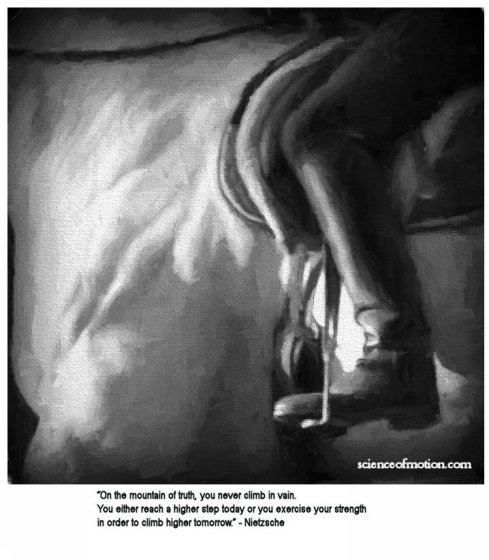
No, it is not true that elongating muscles increases the range of motion. No, it is not true that increasing the swing of the back amplifies the range of motion. These principles have never been true, even if repeated from one generation to the next due to insufficient knowledge. There is a very large elastic-stiffness diversity across vertebrate muscles and elastic stiffness means that there is a resistance. The main filament responsible for elasticity in the muscles, the filament titine functions as serially linked spring that develop tension when stretched. It is time for the equestrian art to evolve to actual knowledge. The art of developing and coordinating the horse physique optimally for the athletic demand of the performance is the art of the equestrian art. This art commences by upgrading riding and training techniques as well as tack apparels to actual knowledge.
“Most of the length change required for the work of locomotion, occurs not in the muscle fibers themselves but by elastic recoil of the associated tendons and muscles aponeurosis.” (The role of the extrinsic thoracic limb muscles in equine locomotion. R. C. Payne, P. Veenman and A. M. Wilson. J. Anat. (2005) 206, pp 193-404). Muscles assure proper tension of the tendons, aponeurosis and fascia, which store and reuse elastic energy. Ultimate use of elastic energy reduces the metabolic cost of locomotion aiming at the true art of riding where amplitude, power, control and beauty are the outcome of optimal efficiency and therefore, optimal use of elastic energy.
Traditionally, the absorption of impact forces, (power absorption), is associated with eccentric contraction, while power propulsion is attributed to concentric contraction. By respecting the horse frequency, (cadence), by educating the back muscles to convert the thrust generated by the hind legs into greater upward force, balance, we can ease the load on the forelegs to the point that force absorption can be achieved by storage of elastic energy through tendons, ligaments and fascia, and the elastic energy can be used for the propulsion minimizing the need of concentric muscle contraction. “Power absorption is therefore not always associated with eccentric contraction but can also be caused by elastic energy storage in tendons and ligaments. The subsequent power production can originate from the release of elastic energy instead of concentric muscle contraction.” (Liduin S. Meerrshoek and Anton J. van den Bogert. Mechanical Analysis of locomotion, 2003)
The horse is unlikely to find the appropriated coordination by his own as primarily, the horse protects his actual body state. But the horse can learn from our knowledge. The beauty of the equestrian art is allowing the horse to express his style and full potential, at ease and effortlessly and soundly. Talking about the degree of poll flexion during the half pass, the old masters used to say, “The rider must be able to see the ball of the eye scintillating.” 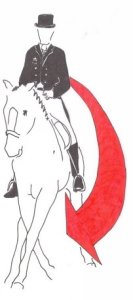 The horse’s eye will not be scintillating if the lateral bending of the thoracic spine is coupled with an inverted rotation such as illustrated on the picture. The vertebral dysfunction creates by inverted rotation induces kinematics abnormalities and consequent stresses on the hind and front limbs. The horse might be obedient but dysfunctional and under stress.
The horse’s eye will not be scintillating if the lateral bending of the thoracic spine is coupled with an inverted rotation such as illustrated on the picture. The vertebral dysfunction creates by inverted rotation induces kinematics abnormalities and consequent stresses on the hind and front limbs. The horse might be obedient but dysfunctional and under stress.


View from the rider’s position, right lateral bending coupled with an inverted rotation, shifts the dorsal spines to the left increasing the load on the left shoulder. At the other end of the thoracolumbar spine the dysfunction is likely to alter the engagement and adduction of the left hind leg. The left picture illustrates right lateral bending of the cranial thoracic and cervical vertebrae associated with proper rotation where the dorsal spines shift toward the inside of the bend. By contrast, the right picture illustrates a right lateral bending of the cranial thoracic and cervical vertebrae coupled with an inverted rotation shifting the dorsal spines toward the outside of the bend.
Riding techniques emphasizing lateral bending of the spine through lateral bending of the neck induce quite often, 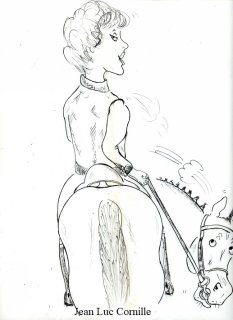 inverted rotation of the thoracic spine. Pulling the neck to the right shifts the thoracic spines to the left inducing inverted rotation.
inverted rotation of the thoracic spine. Pulling the neck to the right shifts the thoracic spines to the left inducing inverted rotation.
The area of the horse thoracic spine where lateral bending and transversal rotation occur, is situated between the rider’s upper thighs. (The diagram on the right illustrates the thoracic vertebrae. The cervical vertebrae are not included in the drawing). 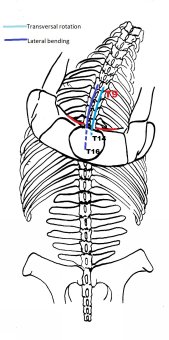 The rider upper thighs directly influence lateral bending and rotations of the thoracic spine. Their stability and efficiency is primordial and related to the rider’ seat and vertebral column function.
The rider upper thighs directly influence lateral bending and rotations of the thoracic spine. Their stability and efficiency is primordial and related to the rider’ seat and vertebral column function.
There is an integrity of the rider’s body that includes the upper thighs.
If the rider is standing over the seat bones, maintained in a neutral balance by the gluteus maximus situated behind the seat bones, and the upper thigh muscles situated ahead of the seta bone, the contact of the upper thigh can be study and precise. 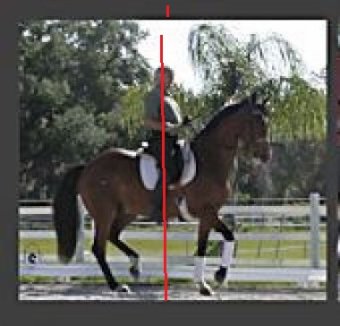 (The red line illustrates the neutral balance where the front part of the rider shoulders, the middle of the spine, the seat bones and the stirrup are in absolute vertical line.) By contrast, if a greater part of the rider weight is supported by the gluteus muscles, the stability and precision of the upper thighs is compromised. Saddles try to save the appearances oversizing the thigh blocks, but they further alter the dynamics between the horse and the rider.
(The red line illustrates the neutral balance where the front part of the rider shoulders, the middle of the spine, the seat bones and the stirrup are in absolute vertical line.) By contrast, if a greater part of the rider weight is supported by the gluteus muscles, the stability and precision of the upper thighs is compromised. Saddles try to save the appearances oversizing the thigh blocks, but they further alter the dynamics between the horse and the rider.
Integrity of the rider’s physique is a key component of actual knowledge. As we move toward an understanding of the equine physique where muscles orchestrate the tension of tendons, aponeurosis, fascia, the concept of stimulus response, correct aids equal correct movement, is no longer valid. The “aids” are words; they are not complete sentences. Guiding the horse’s brain toward the precise orchestration allowing optimum use of elastic energy, demands complete sentences. The dialogue involves subtle nuances in muscle tone but within an integrity of our whole body and not at the level of intensity previously taught.
Measuring equine tactile perception, C. A. Saslow wrote, “Horses can react to pressures that are too light for the human to feel. This raises the possibility that human instability in the saddle results in inadvertent delivery of irrelevant tactile signals to the horse and a consequent failure in teaching the horse which signals are meaningful. Horses deemed insensitive to the leg, (dead-sided) may simply have never had the chance to respond to consistent, light, meaningful signals. Similarly, the seemingly ability of a well-trained horse to have ‘extrasensory perception,’ for its rider’s intentions, may be instead its response to slight movements or tightening of muscles that the rider makes without awareness.”
Paraphrasing Todd Stocker, knowledge is not life changing. The practical application of knowledge is. The practical application of actual knowledge permits a paradigm shift in our equestrian life. 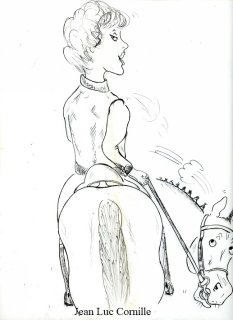 The finesse emphasized by the greatest of the classical literature is no longer an inaccessible dream. It is in fact the daily life that many riders have the skill to achieve as long as they realize that they are pulled back by an equitation of gestures based on antiquated beliefs. Harmonic tensegrity is a dream coming true but it is not a dream; it is a reality made possible by the practical application of knowledge.
The finesse emphasized by the greatest of the classical literature is no longer an inaccessible dream. It is in fact the daily life that many riders have the skill to achieve as long as they realize that they are pulled back by an equitation of gestures based on antiquated beliefs. Harmonic tensegrity is a dream coming true but it is not a dream; it is a reality made possible by the practical application of knowledge.
On this cartoon, the rider pulling on the inside rein is obvious. This is typically the equitation of gestures, the reins effects. However, what is even more impeding, is the torsion of the rider vertebral column as well as cervical vertebrae. Integrity involves nuances in muscle tone but within an integrity of the whole structure. Twisting the spine demands a muscular work and an amplitude of movement that alter the integrity of the rider’s body. The same disturbance of the rider’s integrity occurs when the cervical vertebrae are twisted. The technique is taught in all school of thought, look at the next turn, because they all are based on gestures. Tensegrity, elastic energy, force transport closed kinematic loop, where not known when the books were written. There is no integrity in the body of the rider illustrated on the cartoon. There are gestures. It is the equitation of the correct aids. The aids can be refined and minimized but they remain at the antiquated level of stimulus response.
“You are only given a little spark of madness. You mustn’t lose it. No matter what.” (Robin Williams)
From the equitation of gestures, very few of our ancestors have been able to achieve and never the less explain harmonic tensegrity. Many actual riders have the skill to communicate with their horse at the level of subtle nuance in muscle tone. But they have to use their spark of madness and question the institution. Riders have to use their spark of madness to follow their intuition and listen to their horse instead of submitting their horse to the rule. The solution is not integrating new knowledge to old beliefs. The solution is questioning old beliefs in the light of new knowledge. Similarly, it is difficult to ride at the level of subtle nuances in muscle tone, in a saddle lacking stability and pretending to place the rider in the “right posture.”
The stability of the rider in the saddle as well as the stability of the saddle on the horse’s back is primordial. However, stability is not postural; stability is harmonic motion. Stability is harmonic interaction of forces which result from nuances in muscle tone. No precise and meaningful conversation with the horse can occur if inadvertent shifts of the saddle distorts the interaction of forces between the horse and the rider. Biotensegrity holds life together at all levels. Tensegrity allows biological structures, such as humans and equines, to function optimally. Harmonic tensegrity is the dialogue allowing the rider to guide the horse brain toward optimum orchestration of the horse physique. This is why the science of motion explains tensegrity, elastic energy, subtle nuances in muscle tone. While conventional as well as classical equitation want to pull one back into the box, the science of motion explains how the practical application of knowledge can change for the best, the rider and the horse life. This is why the science of motion promotes and distribute the saddle the best suited to restore the art in the equestrian art.
Jean Luc
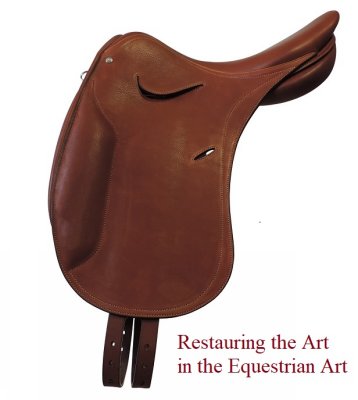
Dressed in Tan, with the
craftmanship proper to the
French “Savoir Faire,”
and a design allowing the
rider to find his or her
own neutral balance, the
Macel Samba S restores the art
In the equestrian art.

Dressed in black, combining class,
lightness, close contact and absolute
stability, the Samba S is the best tool
for an equitation of harmonic tensegrity.


 twitter
twitter facebook
facebook google
google pinterest
pinterest linkedin
linkedin